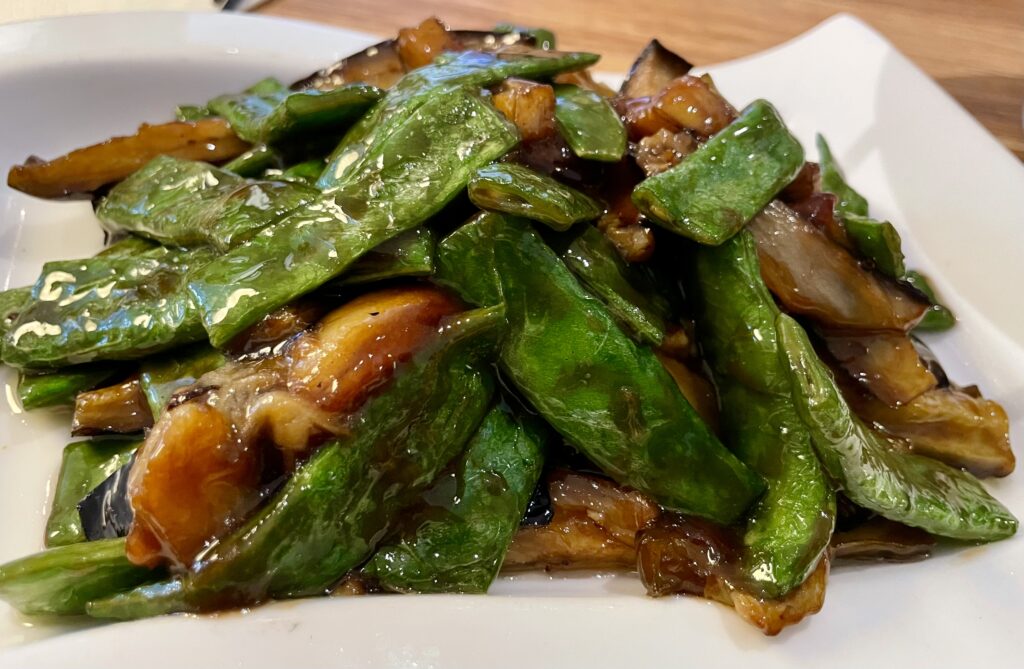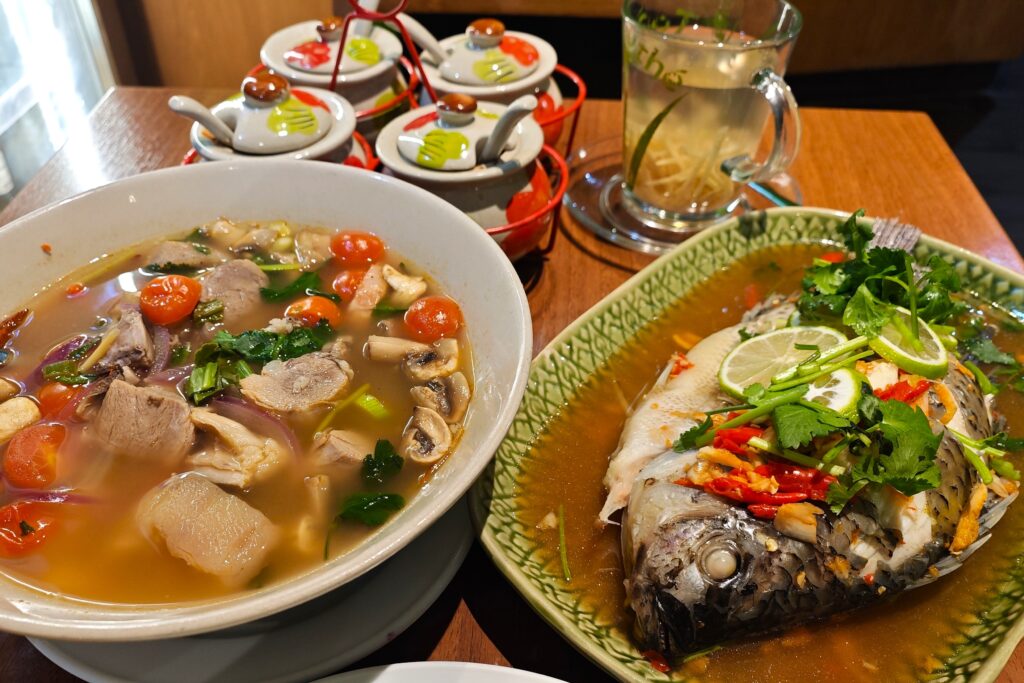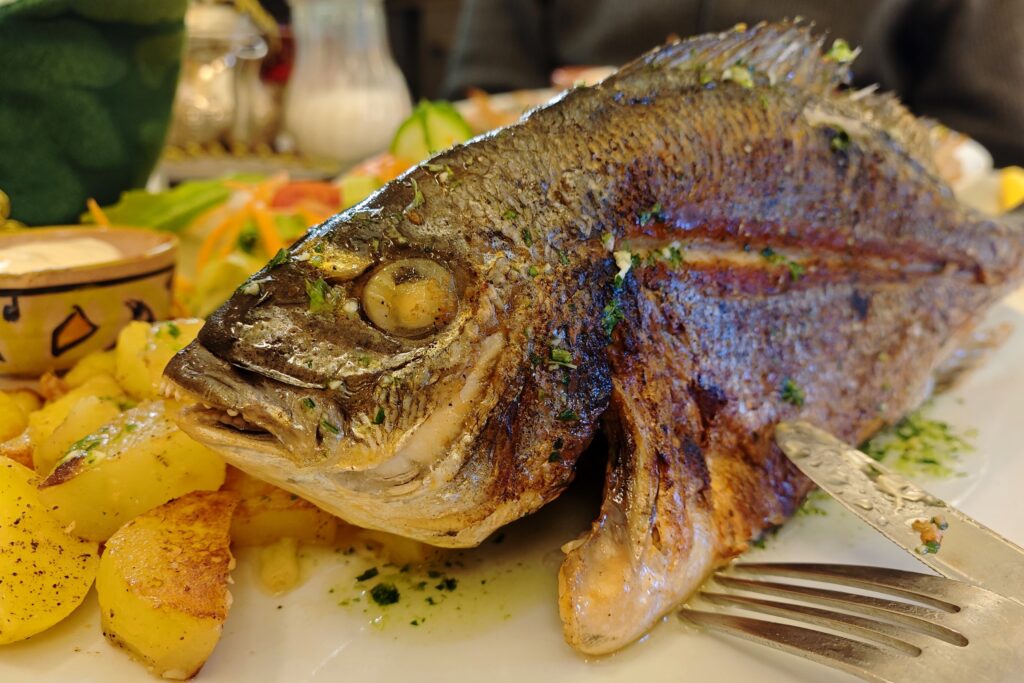We continue our culinary journey through Munich. Today we’re visiting the Xiang Restaurant, which is just a stone’s throw away from the Theresienwiese.
The restaurant’s motto is: “The beauty of food is that it makes a little flower of happiness bloom in our hearts” (in Chinese: 美食的魅力就在于让人的心中开出一朵幸福的小花). This quote comes from a popular Chinese documentary series called 舌尖上的中国 (also known as “A Bite of China“), which explores Chinese food culture and the stories behind individual dishes. In Chinese literature and media, especially in the culinary context, figurative language is often used. This emphasizes the emotional significance and high value placed on food in Chinese culture and society.
Restaurant Profile
- Name of the Restaurant: Xiang Restaurant – 慕尼黑湘香轩
- Adress: Alter Messepl. 4, 80339 München
- Style: Chinese Cuisine – Hunan Cuisine, spicy food
- Price: around 20 – 35 EUR per Person (incl. Drinks and Tips)
Xiang Restaurant focuses on the vibrant cuisine of Hunan Province in central China (known as Xiang Cuisine), the capital of which is Changsha. This city attracts food tourists from all over the country and is often referred to as China’s “hottest” culinary city. Hunan cuisine is known for its bold, spicy flavors, with abundant use of fresh chili peppers, garlic, and fermented ingredients (such as fermented soybeans or chili peppers). Unlike Sichuan cuisine, Hunan cuisine offers a deep, numbing Sichuan pepper; Hunan dishes deliver a more straightforward, intense heat (If you’re a fan of Sichuan food, we’ve also discovered some excellent Sichuan restaurants in Munich for you to explore).
Xiang cuisine, however, is rich in variety and includes not only spicy dishes but also many mild ones. It features meat, fish and shellfish from the region’s rivers and lakes, as well as a wide range of vegetarian and vegan options.
The Xiang Restaurant in Munich reflects the diverse and aromatic cuisine of Hunan very well. The menu ranges from cold appetizers and soups to stir-fried and boiled vegetables, fish and meat, seafood, desserts and many other Chinese specialties such as dim sum and dumplings.
(Note: For more inspiration, check out our article on a Hunan restaurant in Frankfurt).
Now, let’s take a closer look at the restaurant’s cuisine. We chose the grilled sea bass (102. Xiang Fish), the roasted duck (105. Gan-Guo Duck with Beer), and a vegetable dish (426. Stir-fried Eggplant and Beans). Please note that the names and numbers on the menu may change over time, so be sure to check the current menu.
Let’s start with the stir-fried eggplant and beans (Chinese: 豆角茄子 – Dòujiǎo Qiézi), which serves as our starter. Of course, you can also order it as a main dish and combine it with a variety of other options. In China, it’s common to order several small plates to share, often at a round, rotating table. This way you can really immerse yourself in the authentic experience of Chinese food!

As the name suggests, the main ingredients are long green beans (豆角, dòujiǎo) and eggplant (茄子, qiézi). The vegetables are stir-fried in a wok and seasoned with a sauce made of soy sauce, vinegar, a little sugar, and spices such as garlic and ginger. In this version, it’s served without chili, which makes it a little milder. The eggplant absorbs the spices and sauces beautifully, resulting in a soft, almost creamy texture, while the beans retain a slight crunch, adding a fresh, subtly sweet flavor. The dish achieves a wonderful balance of salty, savory, and sweet notes, enhanced by the umami from the fermented beans and soy sauce.
Many restaurants also offer variations of this dish with minced meat or tofu.
Let’s move on to the second dish of the day: Sichuan-style gan-guo duck with beer (Chinese: 干锅啤酒鸭 – Gānguō pí jiǔ yā). A whole duck, including the bones, is cut into small pieces and then stir-fried in a wok or special pot. The menu describes this pot as a “hot pot,” but it has nothing to do with the traditional Chinese hot pot.

What makes this dish truly fascinating is the addition of beer during the cooking process, which gives the duck a unique flavor and enhances its aroma. Fresh vegetables such as green pepper, onion and celery are stir-fried with the duck, adding to the vibrant character of the dish. Seasoned with garlic, ginger, scallions and chili peppers, it showcases the bold spices typical of Sichuan cuisine, including the famous Sichuan pepper (花椒), which provides its signature numbing “málà” (麻辣) sensation. The duck meat remains hearty and tender, while the beer adds a subtle bitterness and malty depth that perfectly balances the duck without overpowering it.
Prepared in a “dry” pot (干锅, “ganguo“), this dish features minimal added liquid – primarily oil – resulting in a lightly roasted, stir-fried texture. A generous amount of oil is first heated in the wok or pot, allowing spices such as chili, garlic, ginger, and Sichuan pepper to release their full aroma. This technique causes the meat to caramelize beautifully while remaining juicy on the inside. Although called a “dry pot,” the cooking process is not entirely dry; it simply uses far less liquid than you’d find in soups or stews.
The Gan-Guo Duck is presented in a small wok with a candle underneath to keep it warm at the table for you to enjoy at your leisure. Enjoy your meal!
Last but not least, let’s talk about the highlight of the evening at Xiang Restaurant: a whole steamed sea bass, known as Xiang fish, served with pickled fermented chilies in true Hunan style – in Chinese: 剁椒鲈鱼 (Duò jiāo Lú yú). Just a heads-up: this dish packs quite a spicy punch! Most of the heat comes from the fermented chiles, which also add a subtly sour and rich flavor that nicely balances the spiciness.

The sea bass has a mild, slightly sweet and fresh flavor that pairs beautifully with the spicy chiles, and its texture is wonderfully succulent. This is largely due to using the whole fish rather than just the fillets. So what are the benefits of cooking with whole fish instead of fillets?
- More flavor from the bones: When steamed whole, the bones, head, and skin release natural gelatin and flavors during cooking, adding depth and complexity to both the sauce and the fish.
- Even cooking: Fish fillets tend to dry out more quickly, especially with moist cooking methods like steaming. Whole fish retains its natural moisture much better.
- Texture: The skin adds a unique texture, especially in steamed dishes. In addition, a whole fish offers more variety in each bite, with different parts of the fish offering different levels of tenderness. For example, the belly is more fatty and juicy than the sides.
- Flavor absorption: Cooking a whole fish allows the flavors of fermented chiles, soy sauce, and other spices to penetrate more evenly into the flesh of the fish, especially through the skin and slit cuts.
These benefits make the effort of cutting through the bones well worth it. Over time, you get used to it and realize that the enjoyment of the whole fish more than compensates for the small effort.
In addition, soy sauce and other savory ingredients are used to create a salty and umami-rich flavor. The dish is garnished with fresh green onions for an extra touch of freshness.
This combination of flavors, along with the fiery heat and fermented ingredients such as pickled chiles, makes the fish a quintessential example of Hunan cuisine.
In summary, Xiang Restaurant in Munich serves delicious and authentic Chinese Hunan cuisine with bold flavors and a wide variety of choices. The combination of fresh ingredients and traditional cooking techniques creates an intense culinary experience.





